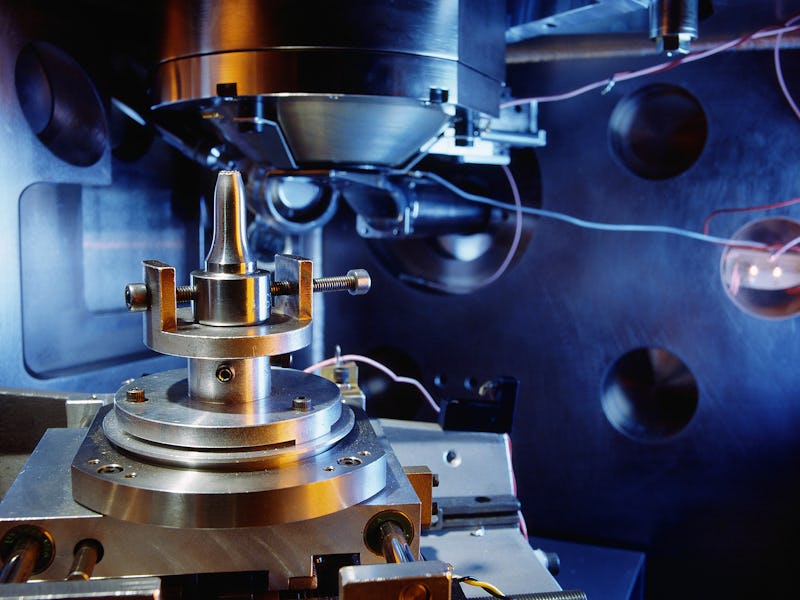Want to watch atoms move? A new device lets microscopes capture video
Researchers have developed a new device that can turn an electron microscope into a high-speed camera.

Electron microscopes have been helping us see what the things around us are made of for decades. These microscopes use a beam of electrons to illuminate extremely small structures, but they can't properly capture something while it's moving. With a laser-assisted electron microscope, you can capture a video of something while it's moving, but they're extremely expensive. How expensive? A top-of-the-line model could run a science lab near $1 million, and not everyone has that cash. A new device could bring down the cost of capturing these videos significantly, opening up science to those who couldn't afford it before.
Researchers at the National Institute of Standards and Technology (NIST) developed the "beam chopper," as it's known, over the course of the last six years. The chopper produces an electromagnetic wave inside a compartment that the electron beam passes through on its way to the space where images are captured.
This electromagnetic wave causes the electron beam to produce a strobe-like effect that allows videos of movement to be captured down to a trillionth of a second. NIST scientist June Lau tells Inverse it's kind of like a strobe light.
"What this beam chopper does is it turns that continuous light into a strobe light. You see flashes," Lau says. "Instead of flashes of light, you see flashes of electrons."
These researchers developed the beam chopper because of the high cost of laser-assisted electron microscope. Even used models on eBay can run up to hundreds of thousands of dollars. Lau says if you already have an electron microscope, you have to buy a whole new setup to take video, but the beam chopper can be retrofitted to be used with any electron microscope. She says they don't know the exact price of one yet, but it will be a lot cheaper than buying a whole new laser-assisted electron microscope.
"I was motivated to work on this because I can see with my own two eyes around me how many older electron microscopes there are," "I thought, what if there is a relatively cheap way to retrofit all of these microscopes to make them basically do new things?" Lau says.
In terms of what it might be used for, Lau says one thing she's excited about capturing is how the electronic devices we use every day actually work. She notes that your phone might have a 2.6 gigahertz processor, but we don't actually get to see how the electric currents move in these processors.
"Up until now, we've exploited a lot of material science to make [our devices] work really, really fast and deliver the goods for us without ever really seeing how they work at those speeds," Lau says. "Perhaps now we can see it."
See also: Scientists developed a better way to monitor brain activity
This device could also be used to help researchers understand biological processes and more. The researchers successfully retrofitted three different types of electron microscopes with their beam chopper and have received several patents for it. This research was published in the journal Review of Scientific Instruments.
As we reported last month, researchers were able to successfully capture video of atoms bonding and breaking for the first time using electron microscopy. If more scientists were able to capture videos with their electron microscopes because they could afford to do it thanks to the beam chopper, we might get a lot more videos like that and make many new discoveries.